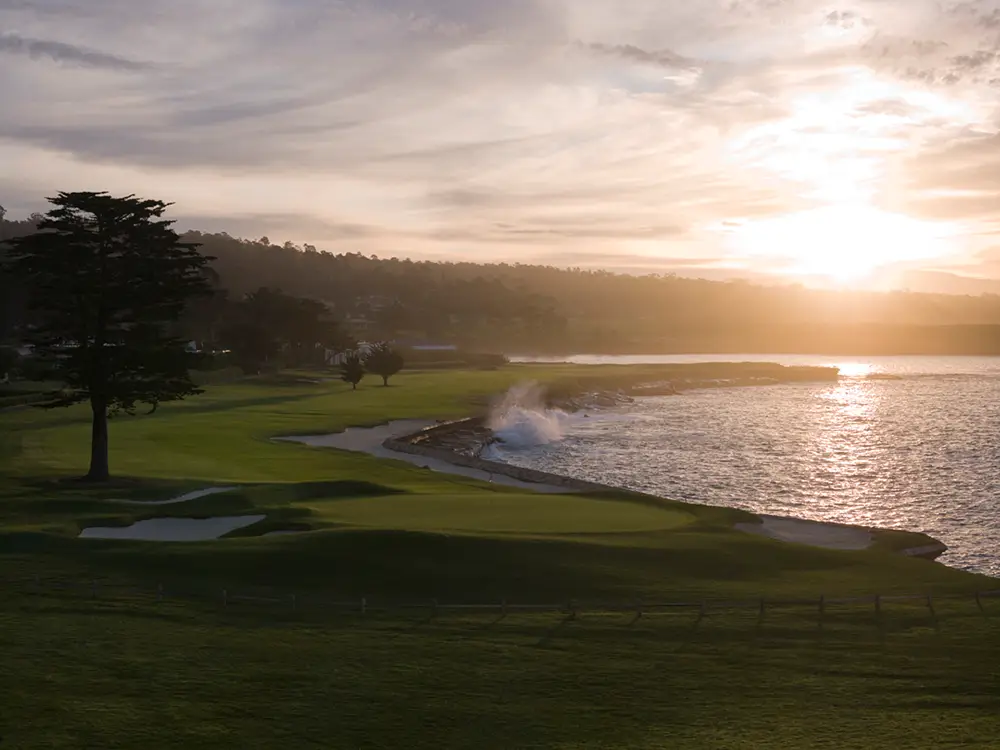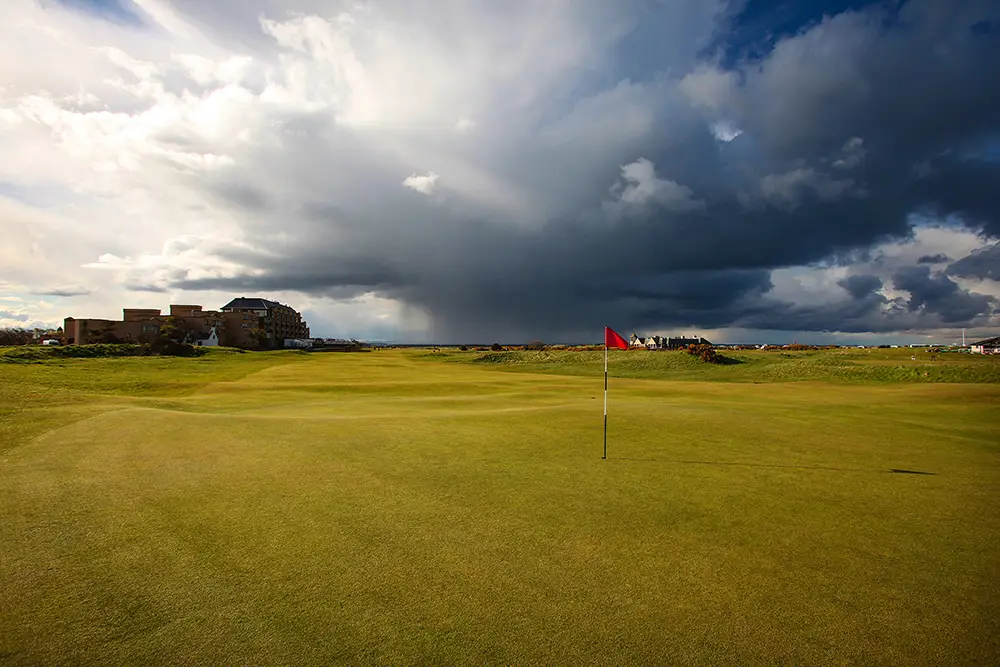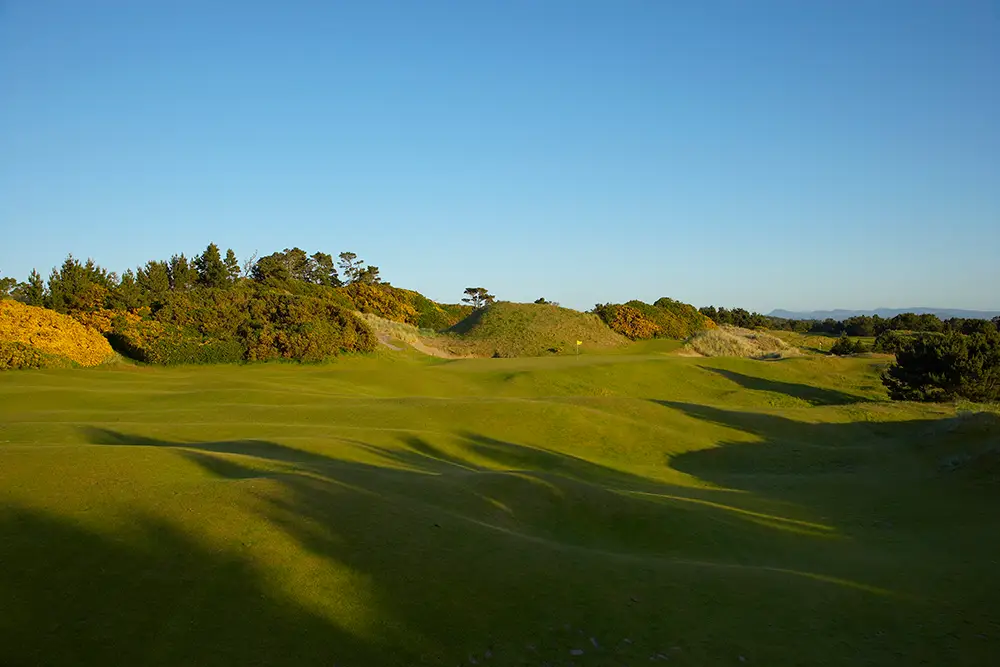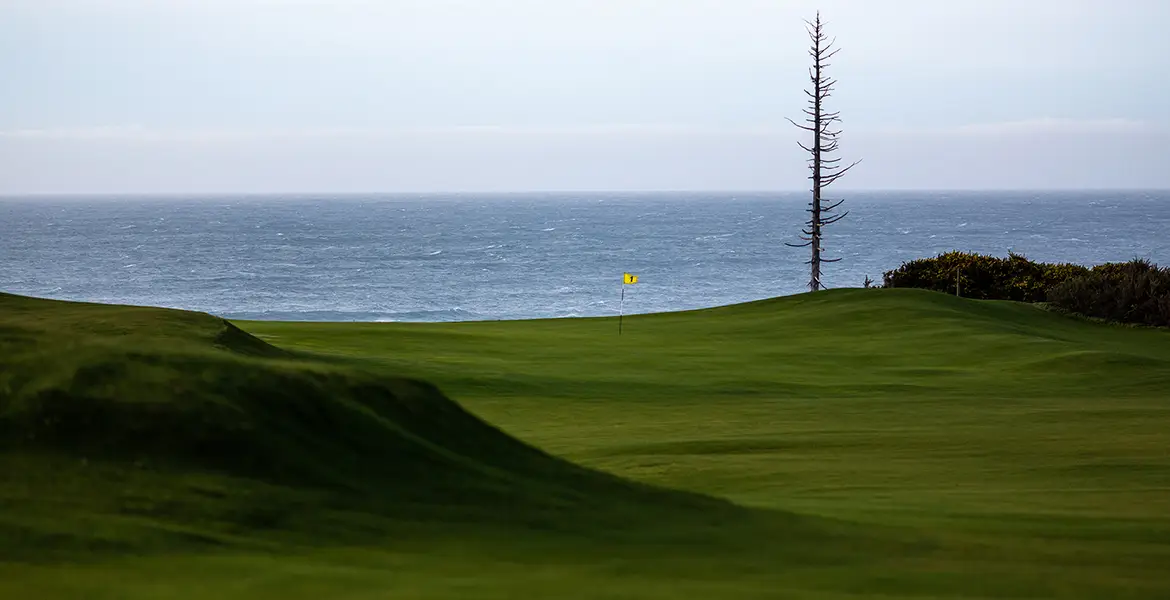It would be a gross overgeneralization to say all straight golf holes are boring. The Old Course at St. Andrews has a lot of straight or straight-ish holes, but thanks to a combination of tantalizing fairway/green contours, bothersome bunkers that really are best-avoided, firm ground, and an ancient stone bridge, there’s not a single hole on the course that is remotely dull.
In America, Pebble Beach has a handful of holes (the 2nd, 4th, 9th, 10th, and 15th) that are pretty linear, but interesting bunkering, natural features and undulations, and the Pacific Ocean allow them to avoid banality. Oakmont’s straight holes are likewise anything but dreary.
It’s probably fair to say, however, that holes with a natural kink, bend, curve, twist, or turn are generally more interesting. Doglegs, so named because of their resemblance to the shape of a dog’s hind leg, instantly raise the question of what your ideal line from the tee should be. From time to time, straight holes can do that too depending on a number of factors, but doglegs do it consistently.

In 2005, Kiwi architect Scott Macpherson wrote in New Zealand publication The Cut that, whether the hole was a par four or par five, a dogleg made golfers think. “The options may be subtle,” he added, “but good doglegs require all golfers to develop a strategy before hitting the ball—even those familiar with the course. Regardless of where the turning point of the dogleg is, however, a hole with a turning point will put a greater premium on accuracy and control than a straight hole.”
Holes that bend to the right typically favor the shot hugging the right side of the fairway as the approach shot to the green will be shorter. The same goes for holes that bend the other way, obviously.
The game’s first ever dogleg hole, designed as such, is thought to be the 4th at Prestwick (“Bridge”) which was part of the club’s first 18-hole layout that opened in 1882 following the acquisition of more land to the north of the original 12-hole course. The hole curves to the right around the Pow Burn which borders the entire right side of the hole. James Braid added a bunker on the inside of the dogleg prior to the 1908 Open Championship to accentuate the bend.
Cape holes are often terrific dogleg holes, at least according to today’s definition. C. B. Macdonald’s original was the par-four 14th at National Golf Links of America, whose green was surrounded by water on three sides. When Seth Raynor built the causeway across the water linking the tee and fairway, Macdonald was forced to move the green a little inland. The primary feature of the hole, and Cape holes thereafter, shifted from the peninsula green to the diagonal tee shot where you bit off as much of the water hazard as you dared to simplify the approach shot, which was threatened by the same hazard.

There are several excellent examples of modern-definition Cape holes, but perhaps the most familiar is the 18th at Pebble Beach which bends left around the Pacific Ocean. You rarely see anyone going close to the water, however, so perhaps a better example is the 18th at TPC Sawgrass where the closer to the hazard the drive goes, the less problematic the approach to the green.
Technically not Cape holes, though great doglegs—surely the most recognizable in the world, in fact—are the dogleg-left 13th at Augusta National (“Azalea”) where the player hugging the trees on the left side of the fairway is rewarded with a flatter stance/lie and shorter second shot; and dogleg-right 17th on the Old Course at St. Andrews where a drive flying close to the hotel and out of bounds wall on the right is positioned much better for the approach to the treacherous green than the drive bailing safe left.
After asking them not to include either hole on their list for fear they would all include both, we asked three designers—John Fought, Brandon Johnson, and Keith Cutten—to name a few of their favorite dogleg holes.

John Fought
Left-to-right
- 18th, Royal Birkdale (Southport, England)—Beautiful downhill tee shot with clubhouse in distance. Rewards a power fade.
- 16th, Pebble Beach (Pebble Beach, Calif.)—Fade off the tee and fade into the green to hold it against the slope. Great hole.
- 18th, Riviera (Pacific Palisades, Calif.)—One of the best closers on the PGA Tour. Needs a fade off the tee for prime location in the fairway.
Right-to-left
- 5th, Mid Ocean Club (Bermuda)—Classic Cape hole. Fantastic risk/reward tee shot across the lagoon.
- 15th, Harbour Town (Hilton Head Island, S.C.)—Straightaway drive, but you need to draw it into the green (well, you used to).
- 16th, Merion (Ardmore, Pa.)—Go close to the quarry off the tee for a shorter shot into the green.

Brandon Johnson
Left-to-right
- 5th, Crail Balcomie Links (Crail, Scotland)—Beautiful hole along the coast made a big impression on me 20 years ago.
- 11th, Tobacco Road (Sanford, N.C.)—Tee shot to wide fairway gains reward for skirting gaping sand pit on right.
- 16th, Pacific Dunes (Bandon, Ore.)—Tom Doak showed great restraint here. Left side of fairway for better approach.
Right-to-left
- 10th, Royal Melbourne West (Melbourne, Australia)—Such a good risk/reward short par four. So much to like.
- 12th, Fort Mill (Fort Mill, S.C.)—Elevated tee shot to fairway sweeping left on valley floor.
- 18th, TPC Sawgrass (Ponte Vedra Beach, Fla.)—Great finishing hole. Reward for skirting close to water on left.

Keith Cutten
Left-to-right
- 2nd, Cape Breton Highlands Links (Ingonish, Nova Scotia, Canada)—Great angles of play, rumpled fairway, and great view of the ocean.
- 2nd, North Berwick West (North Berwick, Scotland)—Great risk/reward hole. Go close to beach for better approach angle.
- 13th, Royal County Down (Newcastle, Northern Ireland)—Aim for left side of fairway to reveal more of the green.
Right-to-left
- 18th, Shinnecock Hills (Southampton, N.Y.)—Longer second but better angle from the right side of fairway.
- 18th, Kapalua Plantation (Lahaina, Hawaii)—Such an exciting hole with great views of the ocean.
- 18th, Harbour Town (Hilton Head Island, S.C.)—Not a big swing to the left, certainly, but after a safe drive to the right you do change direction.

What are your favorite dogleg holes?






